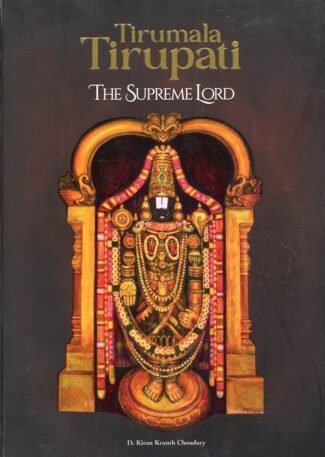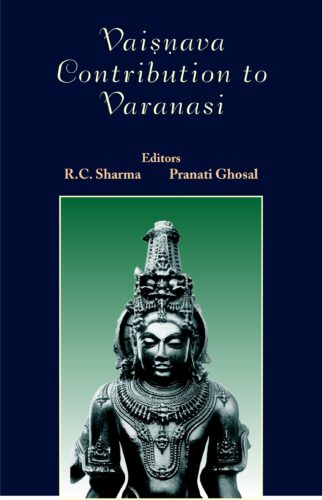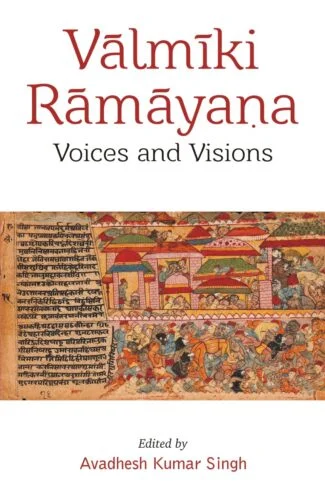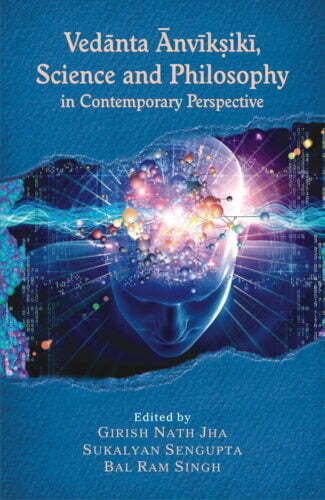Showing 217–228 of 250 results

The volume studies comprehensively the theory and practice of Tibetan Buddhism: its historical, religious and cultural evolution, its various deities and their symbolism, its basic philosophy and sadhana and the intricacies of the religious experience it involves. It has numerous illustrations and references to original works.
Tibetan Buddhism has held a place of its own in the Buddhist tradition, having preserved and evolved the religious culture of the Vajrayana, the final phase of Buddhism in India. Within that, the Tibetan Tantric belief has a unique significance and it has made a memorable contribution to the literature on Tibetan Buddhism. This authoritative work deals with the theory and practice of Tibetan Buddhism in a comprehensive manner. It presents a study of Tibetan Tantricism beginning with an account of the historical, religious and cultural evolution of Tibetan Buddhism and delving into the intricacies of practice of the religion. Dr. Krishna Ghosh discusses the many deities of the tradition as representing a wide range of religious experience from the primitive to the sublime. She lays bare the complex vision of Tibetan Tantric Buddhist philosophy and sadhana, clearing it of the obscurantism associated with the belief system for long. The work abounds in illustrations line drawings and photographs and has numerous references to original works by Tibetan and other scholars. The book is written in an easy-accessible style to allow a broad range of readers to familiarise themselves with Tibetan Tantric Buddhism. Its penetrating insights into the subject would make it an invaluable work for scholars and practitioners of the tradition.

“Tirumala Tirupati” is a captivating coffee table book with over 200 visuals exploring Lord Venkatesa’s divine identity, temple history, architectural insights, and legends of Tirumala. A treasure trove for devotees, it beautifully unveils traditions, rituals, and spiritual significance.
The Supreme Lord is a unique coffee table book with over 200 photographs, graphics, paintings, and architectural ideas. For the first time, it confronts Lord Venkatesa’s idol identification and offers viable answers. This emphasises the necessity of calling the Sri Venkatesvara temple Svayamvyaktakshetram and the Lord inside Yajna Vishnu. Dasavataras of Vishnu, how the Lord reached Seshachala hill, Kaliyuga Pratyaksha daivam, legends, and Srinivasa kalyanam with Padmavati are discussed. The Seven Hills were important in Seshachala when there were several hill ranges, and their significance is linked to the Mahavedi. Exclusive temple history, inscriptions, and architectural representations and their significance are offered. The Supreme Lord’s physiognomy and why He looks so peaceful are described. For devotees, the hundi (koppera) and its shape, the sacrificial vedi, the reasons for the vast collection of quantities, and the construction of garbhagriha according to Mahavedi’s measurements are described. Adi Varaha, Goddess Padmavati, Bhaktas, and rulers are highlighted for their contributions to the temple’s growth in all sectors. Pictures of Tirumala festivals, prasadams, thirthas, and locations around Tirupati are lovely and alive. This volume would be a wonderful treasure trove for all Sri Venkatesvara followers.
| Tirumurai is the sacred poetry in the Saiva tradition of ancient Tamilnadu. Sung to the rhythm of percussion, string and reed instruments, the devotional outpouring of saints and poets known as Nayanars of the fifth to the twelfth century CE reflect the religious and cultural mores of the people. This book attempts to capture the grandeur of this vast, fascinating subject by presenting a detailed overview of the salient features. Beginning with an introduction to Nataraja Tattvam and Tamil Isai, all twelve Tirumurai are explained. Each chapter begins with the life story of the Nayanar followed by an analysis of the poetry with explanation of paN (raga) and sthala puranam. A few select songs from each Tirumurai are presented in the original Tamil with Romanized transliteration as well as English translation, made available in an online audio album complementing this book. Foreword by Lakshmi Viswanathan |

This book beautifully captures the spiritual essence of Arunachala, the sacred hill revered as Lord Shiva himself. With stunning visuals and rich insights, it explores its history, festivals, and divine significance.
“The importance of Tiruvannamalai is beautifully I encapsulated in the words of the Arunachala Mahatmya “”The supreme knowledge (Self-knowledge), the import of Vedanta, which cannot be attained without great difficulty, can easily be attained by anyone who sees the form of this hill from wherever it is visible or who even thinks of it with the mind from afar.”” This profound statement underscores the spiritual significance of Arunachala, a place that Sri Bhagavan Ramana held dear. Every verse of his Sri Arunachala Aksharamanamalai ends with the name Arunachala, reflecting his deep reverence and the powerful spiritual presence of this holy hill.<)P> Arunachala is truly the heart of the world, a secret kshetra where Lord Shiva himself abides. Unlike other holy places such as Kailasha, Kashi, and Chidambaram, which are sacred as the abodes of Lord Shiva, Arunachala is revered as Shiva himself. This hill of light stands as a living manifestation of divine energy, drawing devotees from all corners of the globe.
It gives me great pleasure to write the foreword to this wonderful pictorial book, authored by Dr. Ketu Raachandrasekhar and Vijay Sundararaman lyer, and published by Universal Publishing, on Tiruvannamalai, a divine kshetra that holds a special place in the hearts of devotees worldwide. This book is a visual and informational treasure trove, meticulously compiled to capture the essence of Arunachala, the sacred hill that is revered as a manifestation of Lord Shiva himself.
The captivating visuals in this book bring to life the rich culture of fire worship and the divine manifestation of Shiva as the Agni Linga, one of the Pancha Bhuta Sthalas. Each image is accompanied by comprehensive information that details the history of the temple, its intricate layout, the various important festivals celebrated throughout the year, and several other details not known to all.
A significant highlight of this book is the role of the Nagarathar Chettiar Community, who have been instrumental in the renovation and upkeep of the temple traditions for several hundred years. Their dedication and contributions continue to preserve the sanctity and heritage of this sacred site.
We hope this book serves as a source of inspiration and devotion, allowing readers to experience the divine presence of Arunachala through its pages. May the sacred hill of Arunachala continue to illuminate the path of spiritual seekers.”

Present book presents interesting and authentic details of almost all promient Vedic gods, about their conceptions, their most ancient forms, their orderly evolution, and about their evolved personalities.
There have been quite a few attempts to delineate the nature and character of Vedic Deities on the basis of Vedic Samhitas by European scholars like Macdonell, Hillebrandt, Oldenberg, Luders and, of late, by Oberlies, etc. However, none of these scholars has made attempt to trace the subsequent development of their character and personalities through the later Vedic texts, epics and the Puranas, etc., whereas it goes without saying that the concept of Hindu gods today in the minds of the people is exactly the one which we encounter in the Puranas and in the folk literature.
This obviously means that the personalities of the Vedic Deities did not freeze with the end of Vedic literature but continued to develop in later period as well through the subsequent literarary activities. Taking rather vague clues from the Vedic texts, the authors or narrators of the Puràõas, augmented and supported by folk beliefs, further expanded, modified and developed the personalities of these gods so that, for the most part, the intangible character of these gods acquired a concrete shape and form, a body of flesh and blood, so to say.
The book tries to trace the historical development of the personalities of Vedic Deities through the subsequent Vedic literature, as well as the epics and the Puranas till they acquire the shape and form in which they are conceived and venerated today.

The Vairāgyaśataka of Bhartr̥hari is a part of his Śatakatrayī in which he extols the importance of seclusion, while refuting the merit of addiction, attachment, desire, lust, dissatisfaction and the exclusive control over materialism to attain a peaceful existence. It inspires one to attain supreme bliss by renunciation and spiritual pursuit.
“The Vairāgyaśataka of Bhartr̥hari is a part of his collective masterpiece Satakatrayī, the other two being the Nītiśataka and Śr̥ṅgāraśataka. The present volume is based on Kasmiri Śāradā manuscripts and provides translations and purports of each stanza both in Hindi and English.
This work extols the importance of seclusion, while refuting the merit of addiction, attachment, desire, lust, dissatisfaction and the exclusive control over materialism to attain a peaceful existence. It talks about the futility of desire and condemns infatuation, while highlighting the ignobility of servitude and underscoring the repulsiveness of lasciviousness towards women. It calls for renunciation, detachment from the fruits of action and liberation from sensual objects and desires.
While the work portrays the growing apathy towards worldly attractions and pleasures, it unveils the secrets of the significance of life, by which one should experience the transcendental reality through spiritualism. It essentially invites and inspires one to attain supreme bliss by renunciation and spiritual pursuit.”

Varanasi, the abode of Lord Shiva has also embraced other sects including Vaisnavism. If Shiva is Nataraja or Natesha, Krishna is known as Natavara dancing with gopis. There are traditions which reveal that Kashi was once a Vaishnava stronghold. The book projects the Vaishnava contribution to Varanasi in literature, sculptural and other artistic renderings, visual and performing arts, temples, festivals and ceremonies.
Varanasi, the abode of Lord Shiva has also embraced other sects including Vaisnavism. If Shiva is Nataraja or Natesha, Krishna is known as Natavara dancing with gopis. There are traditions which reveal that Kashi was once a Vaishnava stronghold. In the medieval period many Vaishnava saints from different quarters thronged to Varanasi to preach and popularise their faith. The book projects the Vaishnava contribution to Varanasi in literature, sculptural and other artistic renderings, visual and performing arts, temples, festivals and ceremonies.

The three scholarly volumes contain an iconographic analysis and compilation of the over 760 images from the six chapels of the Pao-hsiang Lou in the Forbidden City, Beijing. There are details of each image like name in Sanskrit, Tibetan and Chinese; physical description; iconographical and stylistic features; and associated images.
The three volumes contain an iconographic analysis and compilation of the over 760 images from the six chapels of the Pao-hsiang Lou (Bao-xiang Lou) in the garden of the Tzu-ning Kung (Palace of Kindness and Tranquillity) in the Forbidden City, Beijing. The pavilion Pao-hsiang Lou, a two-storied simple structure with seven chapels on each floor, holds hundreds of Tibetan Buddhist images of remarkable quality. The volumes present the entire set of images, each reproduced and explained with great clarity. There are details of each image with regard to the physical description of the figure portrayed and its various iconographical and stylistic features and associated images. Each entry contains the name of the deity with the Sanskrit, Tibetan and Chinese transliterations of the name. The very interesting and useful introduction discusses deities of mandalas, placement of deities within a single chapel, images of the Pao-hsiang Lou pantheon compared to the Chu Fo Pu-sa Sheng Hsiang Tsan pantheon, variations in depiction of images with regard to their hair, crown and other parts and associated ornaments, and the asanas of the images. The scholarly volumes are a result of the painstaking research by the author by referring to noted experts on the subject. The volumes will interest all students and scholars of Buddhist art and iconography.

This book reconsiders Valmiki Ramayana from different perspectives literary, aesthetic, ethical, comparative, interdisciplinary, religious, philosophical, social, and archaeological among others. In the process, it underscores significance of Ramayana from modern perspective, as it unveils its multilayered worlds.
Valmiki Ramayana, the first kavya (poetic composition) and the first mahakavya (epic) of the world, is an inexhaustible fountain of culture and knowledge. It has impacted infinite minds and souls in India and abroad, and continues to inspire and engage creative and critical minds, and will remain so for the ages to come.
Ramayana, along with standardizing Ramakatha, transcends history, geography and binaries of mode of thinking. Its appeal may be discerned from the fact that it exists in different versions in various regions and forms. Notwithstanding these versions, Valmiki Ramayana rules human heart and mind for its subject matter and manner of articulation.
The multilayered worlds of Ramayana make it a seedbed of ideas existing at various levels. Traversing generations, and getting interpreted anew in consonance with cultural needs and existential questions, it has earned serious critical consideration of scholars from different perspectives literary, aesthetic, ethical, comparative, interdisciplinary, religious, philosophical, moral, social, archaeological, and intermedial among many. Hence, it demands its reinterpretation by every generation. The present book is a testimony to it, and a response in this direction.
Consisting of scholarly papers by eminent intellectuals and with a perspicuous introduction, this book reconsiders Valmiki Ramayana from different perspectives, presented in a seminar on Ramayana that was organized with the blessings of Pujya Morari Bapu.

All the philosophers of Vedànta have resorted to reason in their attempts to reconcile the reality of Brahman with that of the world of empirical experience. This book traces the philosophical development of Vedànta starting from Badaràyaõa to Sri Aurobindo and critically evaluates their arguments and positions.
The problem of reconciliation of mutually incompatible Upanishadic statements on some of the basic problems has attracted the attention of almost all the major philosophers of Vedanta. One such problem is about the nature of relationship between Brahman and the world of empirical experience. And in their attempts to reconcile the reality of Brahman with that of the world of empirical experience almost all the philosophers of Vedanta have resorted to reason. They have not only tried to provide rational justification for their positions and views but have also used reason freely in analyzing and criticizing the rival positions and views. In this process several arguments which are subtle and cogent are developed. However, some of the Vedantins who have shown critical spirit and acumen in understanding and criticizing the rival arguments and positions are not so critical about their own arguments and positions. Thus the Vedantins who came after Shankara have made his position (advaita) their major purvapaksha without, however, trying to make their own positions a possible purvapaksha. This is an attempt to trace the philosophical development of Vedanta starting from Badarayana to Sri Aurobindo, and to understand and evaluate critically their arguments and positions.

This volume features thirty-one well-researched articles and resonates the current expectations from Vedanta in a fast-changing world. It discusses and debates among reputed and erudite scholars the Vedantic traditions and their scientific and contemporary relevance to the society across the globe.
Ancient Indian thought system, well known for its relentless argumentation on varied contentious issues, paved the way for maturing deep philosophical thoughts, and scientific and technological inventions. This volume Vedanta Anvikshiki, Science and Philosophy in Contemporary Perspective, which resonates the current expectations from Vedanta in a fast-changing world, is the proceedings of the 21st edition of International Congress of Vedanta organized by the Center of Indic Studies, University of Massachusetts, Dartmouth during 11-13 July 2013.
The volume presents thirty-one research papers from reputed scholars on wide-ranging topics like metaphysics, knowledge and hermeneutics, science and technology in ancient texts, interpretation of key texts, digital libraries, yoga and ayurveda, spirituality and science, interfaith dialogue, Indian cosmology and psychology, Vedantic pedagogy, history, culture, social systems, corporate world, governance, music and consciousness studies. These papers present vast treasures of Indias knowledge systems and offer potential for multidisciplinary research.
It would be of immense value to the students and scholars of Vedanta, and would stimulate them for more discussions and debates on Vedantic traditions and their contemporary relevance.
Vedanta for the Western World is a collection of sixty-eight articles appeared in a magazine having the same title during 1938-45 by eminent scholars of international repute such as Aldous Huxley, Allan Hunter, Gerald Heard and Swami Prabhavananda reflecting on the varied aspects and universal reflections of Vedanta, with an Introduction by Christopher Isherwood. Vedanta, the Vedic philosophy per se, and not time-specific, focuses on three fundamental propositions that man’s real nature is divine; aim of human life is to realize this divine nature; and all religions are essentially in agreement as far as this divine concept is concerned. The essays featured in this volume imbibe and exude the same philosophy being best suited to the understanding of new generation audience, especially the one that belongs to the Western world. This unique volume stands out in its genera of works due to a wide gamut of topics featured in it under the umbrella banner Vedanta. It enables every student of Vedanta know the essence of the Vedic philosophies from the perspectives of both Indian and Western scholars and men of merit.
| × |
|
Russia Looks at India 1 x ₹630.00 |
| × |
|
Vedanta Science and Technology: A Multidimensional Apporoach 1 x ₹2,700.00 |
| × |
|
Copper-Plate Inscription of Odisha 1 x ₹2,970.00 |